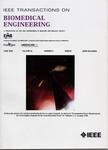版权所有:内蒙古大学图书馆 技术提供:维普资讯• 智图
内蒙古自治区呼和浩特市赛罕区大学西街235号 邮编: 010021

作者机构:Georgia Inst Technol Sch Mech Engn Atlanta GA 30318 USA Georgia Inst Technol Dept Biomed Engn Atlanta GA 30318 USA
出 版 物:《IEEE TRANSACTIONS ON BIOMEDICAL ENGINEERING》 (IEEE生物医学工程汇刊)
年 卷 期:2019年第66卷第7期
页 面:2022-2031页
核心收录:
学科分类:0831[工学-生物医学工程(可授工学、理学、医学学位)] 0808[工学-电气工程] 08[工学]
主 题:Cavitation controller closed-loop controller passive acoustic mapping nonlinear state controller focused ultrasound image guided therapy
摘 要:Ultrasonically actuated microbubble oscillations hold great promise for minimally invasive therapeutic interventions. However for their successful translation to the clinic, real-time methods to control the amplitude and type of micro-bubble oscillations (stable versus inertial acoustic cavitation) and ensure that cavitation occurs within the targeted region are needed. In this paper, we propose a real-time nonlinear state controller that uses specific frequency bands of the microbubble acoustic emissions (harmonic, ultra-harmonic, etc.) to control cavitation activity (observer states). To attain both spatial and temporal controls of cavitation activity with high signal-to-noise ratio (SNR), we implement a controller using fast frequency-selective passive acoustic mapping (PAM) based on the angular spectrum approach. The controller includes safety states based on the recorded broadband signal level and is able to reduce the sensing inaccuracy with the inclusion of multiple frequency bands. In its simplest implementation, the controller uses the peak intensity of the passive acoustic maps, reconstructed using the third harmonic (4.896 +/- 0.019 MHz) of the excitation frequency. Our results show that the proposed real-time nonlinear state controller-based PAM is able to reach the targeted level of observer state (harmonic emissions) in less than 6 s and remain within 10% of tolerance for the duration of the experiment (45 s). Similar response was observed using the acoustic emissions from single element passive cavitation detection, albeit with higher susceptibility to background noise and lack of spatial information. Importantly, the proposed PAM-based controller was able to control cavitation activity with spatial selectivity when cavitation existed simultaneously in multiple regions. The robustness of the controller is demonstrated using a range of controller parameters, multiple observer states concurrently (harmonic, ultra-harmonic, and broad-band), noise levels